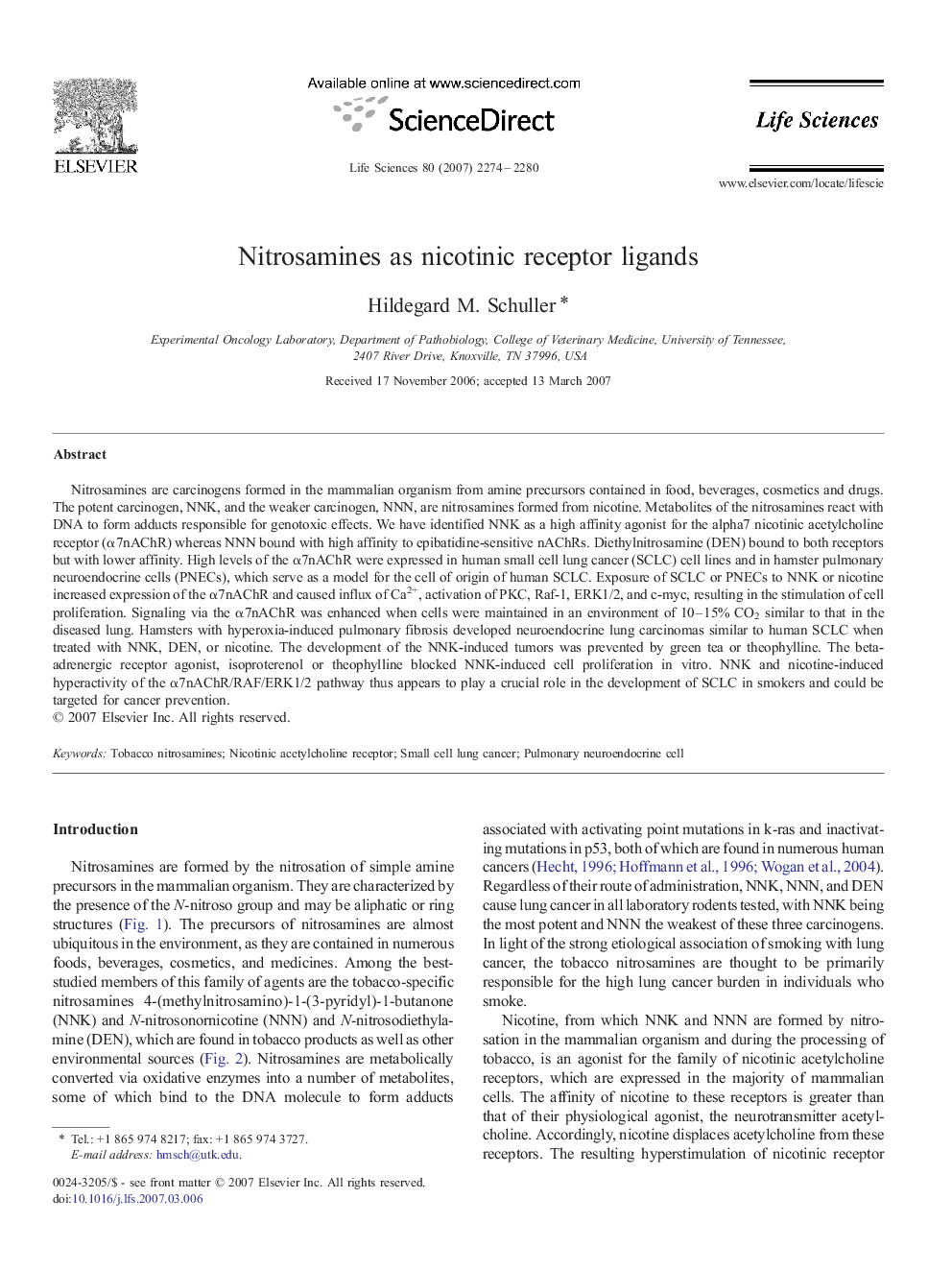| کد مقاله | کد نشریه | سال انتشار | مقاله انگلیسی | نسخه تمام متن |
|---|---|---|---|---|
| 2553566 | 1560769 | 2007 | 7 صفحه PDF | دانلود رایگان |

Nitrosamines are carcinogens formed in the mammalian organism from amine precursors contained in food, beverages, cosmetics and drugs. The potent carcinogen, NNK, and the weaker carcinogen, NNN, are nitrosamines formed from nicotine. Metabolites of the nitrosamines react with DNA to form adducts responsible for genotoxic effects. We have identified NNK as a high affinity agonist for the alpha7 nicotinic acetylcholine receptor (α7nAChR) whereas NNN bound with high affinity to epibatidine-sensitive nAChRs. Diethylnitrosamine (DEN) bound to both receptors but with lower affinity. High levels of the α7nAChR were expressed in human small cell lung cancer (SCLC) cell lines and in hamster pulmonary neuroendocrine cells (PNECs), which serve as a model for the cell of origin of human SCLC. Exposure of SCLC or PNECs to NNK or nicotine increased expression of the α7nAChR and caused influx of Ca2+, activation of PKC, Raf-1, ERK1/2, and c-myc, resulting in the stimulation of cell proliferation. Signaling via the α7nAChR was enhanced when cells were maintained in an environment of 10–15% CO2 similar to that in the diseased lung. Hamsters with hyperoxia-induced pulmonary fibrosis developed neuroendocrine lung carcinomas similar to human SCLC when treated with NNK, DEN, or nicotine. The development of the NNK-induced tumors was prevented by green tea or theophylline. The beta-adrenergic receptor agonist, isoproterenol or theophylline blocked NNK-induced cell proliferation in vitro. NNK and nicotine-induced hyperactivity of the α7nAChR/RAF/ERK1/2 pathway thus appears to play a crucial role in the development of SCLC in smokers and could be targeted for cancer prevention.
Journal: Life Sciences - Volume 80, Issues 24–25, 30 May 2007, Pages 2274–2280